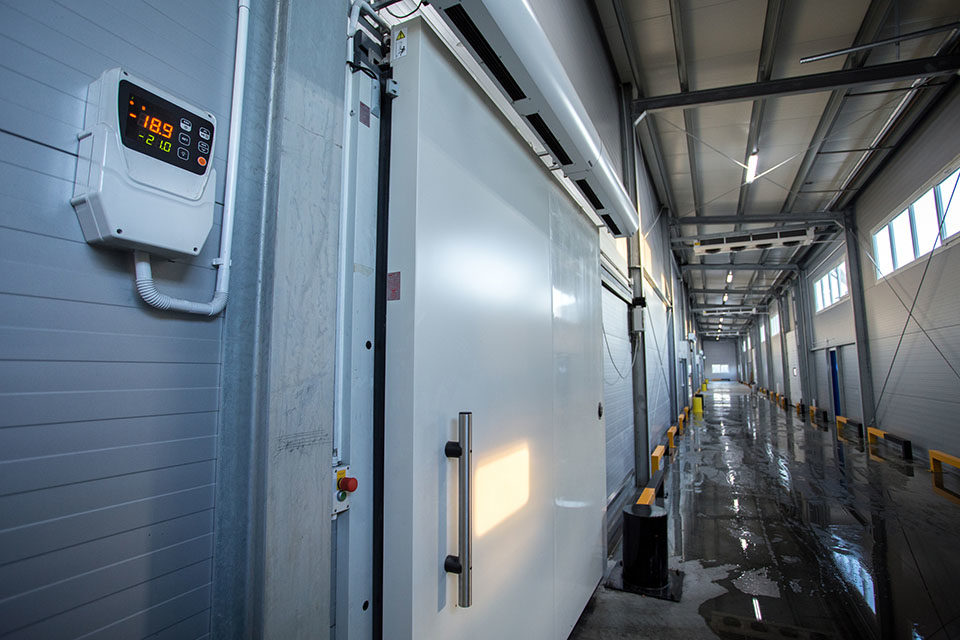KANSAS CITY, MO -- Consumer inclination toward food and beverages with longer shelf-life and the rising effort to mitigate food waste have been fueling the use of the cold chain in dairy. However, factors such as its complex infrastructure, regulations, workforce issue and the current supply chain disruption are influencing its growth potential.
“We’re talking about everything from labor shortages, capacity shortages, with transportation, the challenges of getting product to market and on shelves,” said Daniel Gayford, vice president, key accounts, Americold Logistics, during his presentation “Addressing Supply Chain Security and Disruption in the Cold Chain,” a webinar presented by the International Dairy Foods Association (IDFA), Washington, DC. “We’re looking at what’s happening in the port situation, both on the west coast, the east coast, down in the Houston market, as well, talking about the challenges associated with rising labor costs and then overall inflationary rates that are just driving more and more actions to be taken place both by producers, the intermediaries, 3PLs (third-party logistics), and then the retailers and foodservice providers, as well.”
The global cold chain market size was estimated to be valued at $233.8 billion in 2020 and is projected to reach $340.3 billion by 2025, recording a CAGR of 7.8%, according to Research and Markets, a firm based in Dublin, Ireland.
Dozens of controls need to be in place to ensure an unbroken cold chain for dairy products. The regulation of dairy products typically centers on monitoring, testing and controlling environments for dairy products. Ensuring that milk moves rapidly from farm to consumer is a complicated undertaking. Supply chains need resilience to eliminate transportation and storage disruptions. It’s critical for the product to be moving at all times.
Dairy products require strict attention as they move through the cold chain because of the risk they pose to consumers if that cold chain is broken. As a result, it’s critical that supply chain managers do everything they can to ensure that the dairy cold chain remains intact.
“Moving perishable food products from source to final destination relies on the temperature-controlled logistics industry,” said Matthew Ott, president and chief executive officer of the Global Cold Chain Alliance (GCCA), Arlington, Va. “From temperature-controlled warehouses, to processing facilities, to refrigerated trucks – each step in the cold chain is equally important.”
Dairy processing is covered under the Food Safety Modernization Act (FSMA), which went into effect in 2011. FSMA requires facilities processing or packaging dairy have a food safety plan in place. Warehouses that hold dairy products are not required to develop a food safety plan, but controls must still be in place to minimize the risk of contamination and spoilage.
“There’s no doubt that when we look at supply chains, it’s a complex ecosystem, it requires a lot of these advanced solutions,” Gayford said. “It also is really an opportunity with a lot of touchpoints for failure, failure being in terms of disruption, being in terms of misses for ensuring the integrity of the supply chain over its full course. We look at that seriously, and from the way we design our solutions, from the way we design our network and from an opportunity to offset where that risk may be.”
COVID-19 DISRUPTIONS
At the onset of the COVID-19 pandemic, the dairy industry faced challenges as food service demand fell and retail demand skyrocketed. However, the industry ultimately emerged intact thanks to adjustments such as portfolio simplification and manufacturing flexibility.
“The supply chain, specifically the cold chain, has demonstrated great strength and resiliency in responding to disruptions over the last 18 months,” Ott said. “The greater supply chain has worked together in extraordinary ways to deliver consumer goods as quickly and safely as possible. Access to skilled workers in warehousing, transportation and management jobs has always been a challenge for our sector, the pandemic only reinforced the importance of recruitment, development and retention programs.
“Ensuring the continuity of the cold chain from start to finish in addition to safeguarding food safety is a fundamental priority for GCCA and its members. It was before the pandemic, and it will continue to be long after the pandemic.”
Even as the direct effects of COVID-19 have waned, supply chain issues and labor shortages continue to disrupt the dairy industry. Even though milk production continues to grow, as does consumption and consumer demand, processors are running into mounting issues, including rising costs across the board, from raw materials to transportation, that could weigh on dairy product production in coming months.
“As we look at our business and the cold chain in general, seeing cost escalations of anywhere from 13 to 20% in terms of what labor costs are, and that can be both direct labor and indirect labor that’s associated with benefits and just recruiting activities in order to secure labor to run operations.” Gayford said. “It’s been very clear that the labor shortages and transportation charges just have required our customers to look at how they manage their distribution platforms differently to ensure that they’ve got a contingency plan behind them.”

